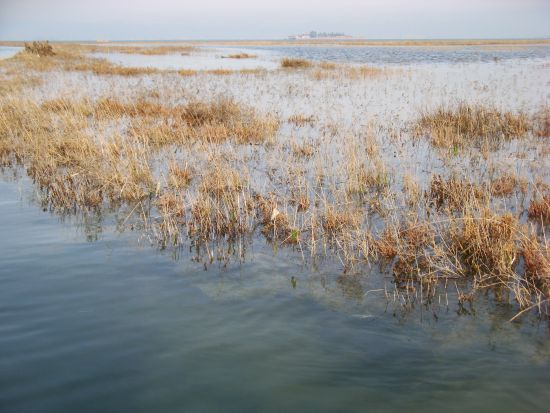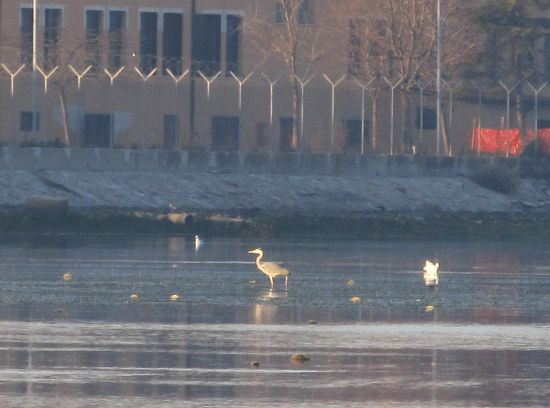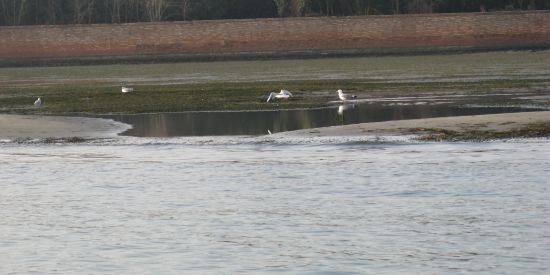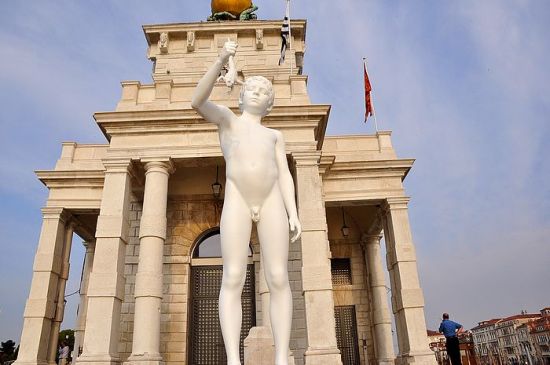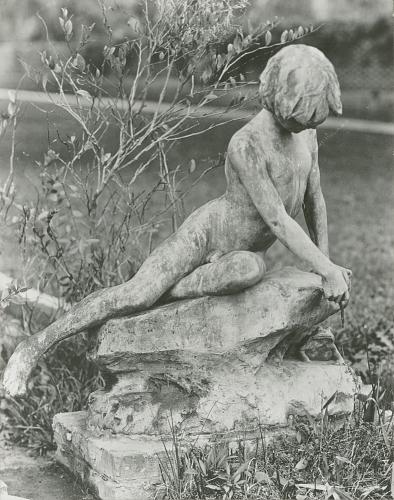
That was an oversight. So here’s the plan.
First, the frog would be freed.
Second, he would be given a large pile of small- and medium-sized rocks to throw at the boy.
Third, he would be given a hundred things his heart might desire, from the unlisted phone numbers of Charles Ray (sculptor) and Francois Pinault (collector), to his own private estate with tennis court and helipad in the Great Moss Swamp, to a date with every winner of the Miss Humanity of the Netherlands pageant. And a huge party at the Waldorf-Astoria for freed dolphins, liberated dancing bears, wounded hedgehogs, rehabilitated slow lorises, and birds whose owners accidentally left their cages open. He’ll also have his own smorgasbord with all the beetles, grasshoppers, spiders, and Purina Frog Chow he’ll ever want. And a trampoline. And a pony.

While we’re on the subject of animals, here’s something you might find interesting. More than 240 species of birds spend at least some, if not all, of their time in the Venetian lagoon and immediate vicinity.
An article in the Gazzettino announced this fact along with the notice of the publication of a new atlas of birds, the result of five years of data-gathering. For the record, the title is “Uccelli di laguna e di citta’ – L’atlante ornitologico del comune di Venezia 2006-2011,” written by Mauro Bon and Emanuele Stival, ornithologists of the Museum of Natural History, published by Marsilio.
Of these birds, 142 species come only for the winter, 115 come to nest, and about 60 are migrating. If you stop and read that over again, I think you’ll be respectfully amazed. In fact, the lagoon is at a crucial point on a major north-south flyway, and is one of the largest lagoons left in Europe. It’s far from being just scenery.
Even though I’ve never seen them, I now have learned that there is a Hungarian royal seagull which arrives in the fall, and spends the winter in the Giardini Reali between the Piazza San Marco and the lagoon. And there is an extremely rare black-legged kittiwake that comes from England.
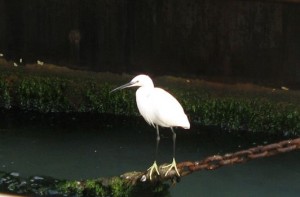
I was already interested in birds because rowing around the lagoon at all hours and in all seasons means that you see plenty of them. For one thing, they’re everywhere. For another, they’re generally easier to see than fish.
Some of the birds I’ve come to recognize are as much as part of Venice as canals and tourists. The svasso (grebe) and tuffetto (little grebe), only appear in the winter. The cormorants, mallards, seagulls, egrets and herons are here all year. I’ve already gone on too long about my passion for blackbirds (a few months per year), and I’ve never bothered to mention pigeons because there’s nothing worth saying about them. They are the roaches of the avian world; they’ll be here pecking around and crooning after the last nuclear device explodes. I am prepared for hostile letters from pigeon-feeders.
There is one kingfisher who I watch for as we row behind the Vignole; all you can see is a flash of iridescent blue-green flitting through the trees and over the water. I wish he’d hold still somewhere just for a minute, but he’s not interested in being admired.
In the plush summer nights we almost always hear a solitary owl called a soleta (civetta in Italian), somewhere high in the trees in the Public Gardens. He or she makes a soft one-tone hoot, repeated pensively at perfectly regular intervals. It’s like a metronome, far away. It goes on for hours. It’s very comforting.
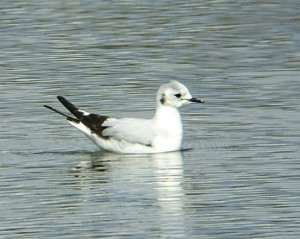
For two days not long ago we were startled to see a fluffy young gull we’d never seen before, standing on the fondamenta gazing out at the lagoon. Determined research revealed that it is a Little Gull. We haven’t seen it since.
And one magical winter day a trio of swans flew over us. You hardly ever see the wild swans, but here were three, flying so low that I could see their long necks undulating slightly and hear a curious murmur from their throats.
Many of these birds depend on organisms and elements in the lagoon wetlands which exist because of, or are replenished by, acqua alta. If so many people who never leave the city didn’t get so worked up about having to put on boots, the water could continue to provide for lots of creatures who like being here too. Maybe your tourist or trinket-seller doesn’t care about the birds, but the birds probably don’t care about the Doge’s Palace and Harry’s Bar. Just saying.
